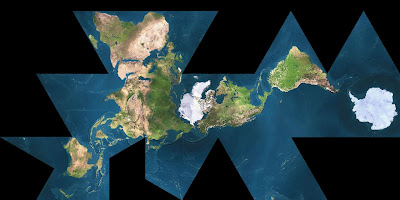My 'ah-ha' moment came while reading The Death of Environmentalism where the authors break down the three environmental movements and explain why political legislation is outmoded and doesn't work anymore. If environmentalism is treated as nothing more than legislative proposals, then it's seen as just another special interest or a "thing" separate from humans. The most logical answer to current environmental problems is to have an inspiring vision that a majority of Americans can get excited about. That investment and alliance building with industry and labor is the key to a global environmental movement.
I also really enjoyed the practice of blogging over that of journaling. The loose structure made for a really dynamic range of blog entries and I got a lot out of reading everyone else's blogs and what they took from the readings. I must admit this was my first blogging experience and it's an amazing forum to reach out to the community and promote ideas. I now see our blogs come up during google searches, which is a little nerve-wracking and fun at the same time.
I must say, however, that I wish the class could have read something more extensively about human nature, and not just human/nature. Human nature was touched upon in Gary Snyder's article, in the biophilia article, and indirectly in many of the class discussions, but never given very much attention as a topic all on its own. It always applied to something just out of reach of my own work, like the idea of a "natural human" as someone who lives more in sync with nature than other humans. I could apply the idea of a "natural human" to my transgender photos, but not nearly in the same context it was used in the article. I'm not saying I'm upset about this; I signed up for the class because landscape and nature is an area I wanted to learn more about, and I did. But because many of the assignments called for us to use the readings to reflect upon our own work, I often found myself at a loss to do so, at least without stretching the ideas to great lengths or calling upon my own research.
I now leave you with a rather embarrassing YouTube video my sister made of our cat Vincent playing fetch. Sure it's cute, but in terms of a cat's nature, and for the purpose of this blog, is it natural?!? Well, it is for him!





























